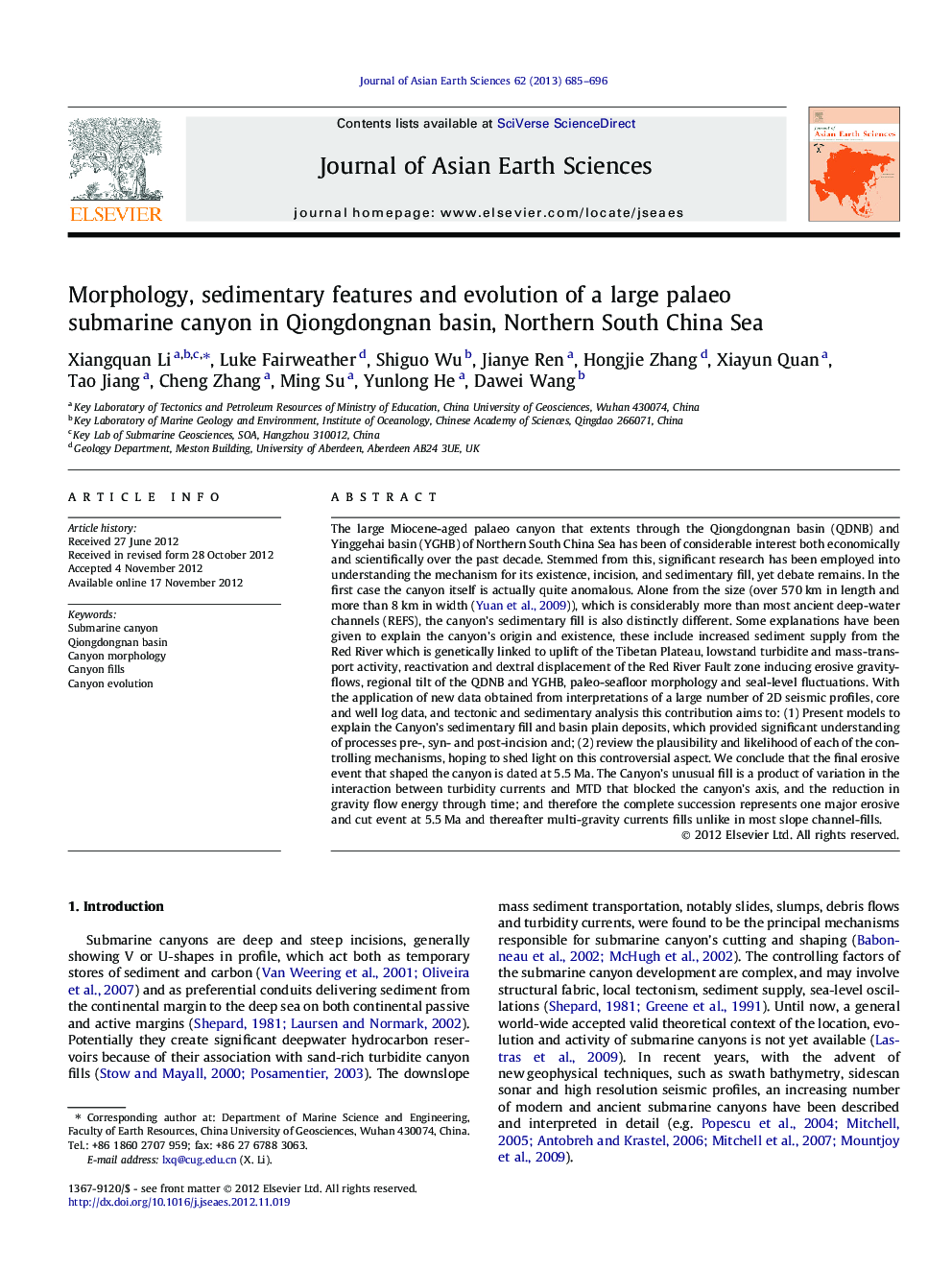| Article ID | Journal | Published Year | Pages | File Type |
|---|---|---|---|---|
| 4731309 | Journal of Asian Earth Sciences | 2013 | 12 Pages |
The large Miocene-aged palaeo canyon that extents through the Qiongdongnan basin (QDNB) and Yinggehai basin (YGHB) of Northern South China Sea has been of considerable interest both economically and scientifically over the past decade. Stemmed from this, significant research has been employed into understanding the mechanism for its existence, incision, and sedimentary fill, yet debate remains. In the first case the canyon itself is actually quite anomalous. Alone from the size (over 570 km in length and more than 8 km in width (Yuan et al., 2009)), which is considerably more than most ancient deep-water channels (REFS), the canyon’s sedimentary fill is also distinctly different. Some explanations have been given to explain the canyon’s origin and existence, these include increased sediment supply from the Red River which is genetically linked to uplift of the Tibetan Plateau, lowstand turbidite and mass-transport activity, reactivation and dextral displacement of the Red River Fault zone inducing erosive gravity-flows, regional tilt of the QDNB and YGHB, paleo-seafloor morphology and seal-level fluctuations. With the application of new data obtained from interpretations of a large number of 2D seismic profiles, core and well log data, and tectonic and sedimentary analysis this contribution aims to: (1) Present models to explain the Canyon’s sedimentary fill and basin plain deposits, which provided significant understanding of processes pre-, syn- and post-incision and; (2) review the plausibility and likelihood of each of the controlling mechanisms, hoping to shed light on this controversial aspect. We conclude that the final erosive event that shaped the canyon is dated at 5.5 Ma. The Canyon’s unusual fill is a product of variation in the interaction between turbidity currents and MTD that blocked the canyon’s axis, and the reduction in gravity flow energy through time; and therefore the complete succession represents one major erosive and cut event at 5.5 Ma and thereafter multi-gravity currents fills unlike in most slope channel-fills.
► The canyon’s morphology and special fills are described and analyzed in detail. ► The final erosive event of the canyon is dated at 5.5 Ma. ► The plausibility and likelihood of each of the controlling factors are reassessed. ► We set up the evolution and development models of the canyon.
